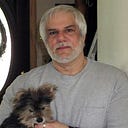Member-only story
Using Red Light Therapy To Boost Testosterone Levels
Studies say…

Red Light Therapy (RLT), also known as photobiomodulation is being used in thousands of clinical studies to treat everything from skin conditions to neurodegenerative diseases. It works.
Bright Light
An Italian study in 2016 shows that exposure to bright light increases testosterone levels. A group of 38 men who had a diagnosis of hypoactive sexual desire disorder (low interest in sex). These men were divided into two groups. One group received one-half hour of bright light treatment in the morning. The placebo group received a much less intense light treatment for a half hour. The light device used is similar to the ones that treats Seasonal Affective Disorder (SAD).
After two weeks the untreated group did not report any difference in their sexual desire. The treated group reported a 3-fold increase in sexual satisfaction. The free testosterone level in the placebo group remained unchanged. While the free testosterone in the treated group increased by more than 50%, from 2.1 ng/ml to 3.6 ng/ml. (study)
Sunlight
The ability of sunlight to improve testosterone levels has been known for a long time. (source) How sunlight improves testosterone levels is by stimulating the body’s vitamin D production. Increased vitamin D, especially those you are deficient in vitamin D, raises testosterone levels. This, partially explains the higher seasonal pregnancy rate in the summer (study).

Ultraviolet Light
The ability of UV light to stimulate testosterone in men has been known since a 1939 clinical study. Dr. Myerson, exposured the chest area of men to UV light over the course of five days. The results of the exposure boosted testosterone levels incrementally over the five day ending on the fifth day with a 120% increase over baseline.
Dr. Myerson then stopped the UV exposure and watch the testosterone levels incrementally decrease and returned to baseline after a period of 8 days.
